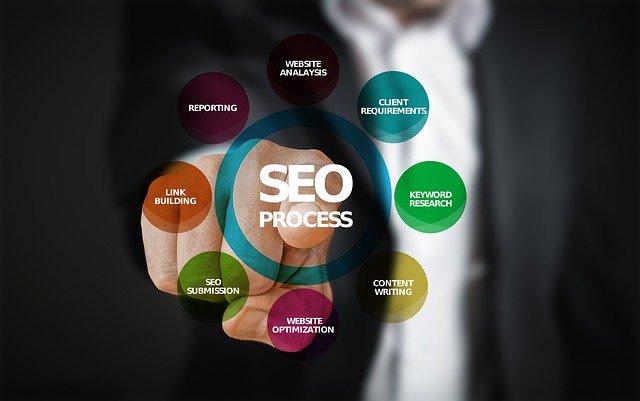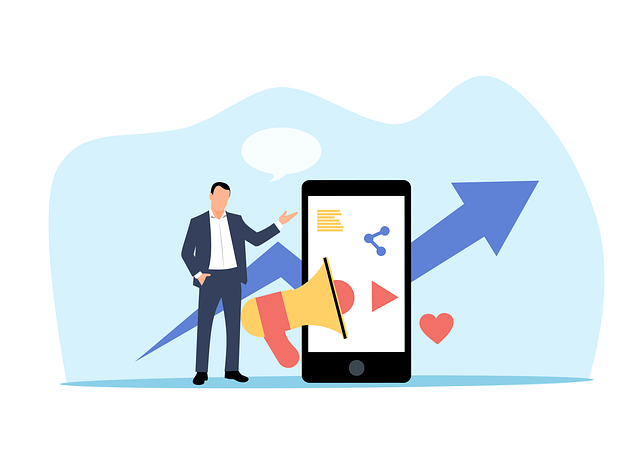For many businesses, Google Ads have been a cornerstone of customer acquisition. With precise targeting, instant visibility, and the ability to reach customers actively searching for products or services, it’s a powerful tool. But relying solely on Google Ads has its downsides—costs can be high, competition fierce, and you’re always subject to algorithm changes. So, how do you build a sustainable acquisition funnel that doesn’t depend on Google Ads? The answer lies in creating a multi-channel, self-sustaining strategy that attracts, engages, and converts customers organically and on your own terms.
This article explores practical, actionable strategies to build a customer acquisition funnel outside of Google Ads. By leveraging content marketing, social media, SEO, email marketing, and more, you can create a robust, reliable funnel that continually attracts new leads and nurtures them toward conversion.
Step 1: Develop a Strong Content Foundation
Create Value-Driven Content to Attract Leads
At the core of a sustainable acquisition funnel is value-driven content that addresses your audience’s needs and interests. Content marketing is an essential tool for pulling in organic traffic, building brand authority, and providing the information customers seek. High-quality content—whether blog posts, videos, guides, or infographics—attracts potential customers, draws them into your funnel, and keeps them engaged with your brand over time.
For example, if you’re a software company, publishing content like “Beginner’s Guide to Project Management Software” or “How to Streamline Team Communication” can attract readers interested in solutions your product offers. The key is to create content that solves real problems, answers questions, or educates, rather than simply pushing sales.
Focus on Evergreen Content for Lasting Impact
Evergreen content, which remains relevant and useful over time, is a powerful asset in a self-sustained funnel. By creating resources that continue to bring in organic traffic, you build a base of consistent, long-term leads. Think of evergreen content as an investment that keeps paying off—each piece continues to attract, inform, and engage new customers without constant updates.
For example, an e-commerce brand selling fitness equipment could publish a comprehensive “Home Workout Equipment Guide.” This piece of content remains relevant and valuable, continually attracting traffic from fitness enthusiasts and potential buyers.
Step 2: Build Organic Traffic Through SEO

Optimize for Long-Tail Keywords
To bring in organic traffic consistently, search engine optimization (SEO) is essential. One effective approach is to target long-tail keywords, which are specific, often lower-competition search phrases. Long-tail keywords attract highly targeted traffic because they reflect what users are actively searching for. By optimizing your content around these keywords, you increase your chances of ranking on search engines, which brings in qualified leads directly to your website.
For instance, instead of optimizing for “fitness equipment,” which is highly competitive, an article on “Best Dumbbells for Small Apartments” might attract a more targeted audience actively seeking that product. Long-tail keywords help attract potential customers who are further along in their search and more likely to convert.
Build a Link Strategy to Boost Domain Authority
Another important factor in SEO is building your site’s authority through quality backlinks. Backlinks from reputable websites signal to search engines that your content is trustworthy and valuable, helping your pages rank higher. To build these links, engage in outreach, guest blogging, and partnership opportunities that encourage other sites to link back to your content.
For example, a travel brand could collaborate with popular travel bloggers or websites to create destination guides, with backlinks to relevant travel resources on their site. These links drive referral traffic, enhance SEO, and increase the visibility of your acquisition funnel.
Step 3: Engage with Potential Customers on Social Media
Leverage Platforms That Align with Your Audience
Social media platforms offer a unique opportunity to connect with potential customers where they spend their time. By sharing relevant, engaging content on platforms like Instagram, LinkedIn, Facebook, or TikTok, you attract attention, build a following, and drive traffic to your website. Each platform has its strengths, so focus on the ones where your audience is most active and where your content can best engage them.
For example, if your target audience is professionals, LinkedIn might be ideal for sharing industry insights and thought leadership content. Conversely, a younger, more visually-oriented audience might respond well to Instagram Reels or TikTok videos. Your social media efforts should align with where your audience is most likely to engage.
Create Interactive Content to Drive Engagement
Interactive content—polls, quizzes, Q&As, or live videos—encourages users to engage directly with your brand, increasing visibility and strengthening customer relationships. When users interact with your posts, they become more likely to remember your brand and eventually convert into customers. By creating engaging content that people want to participate in, you make your social media presence a natural part of your acquisition funnel.
For instance, a skincare brand could host live Q&A sessions on Instagram, allowing followers to ask questions about skincare routines or products. This interactive approach builds trust, educates the audience, and drives engagement, encouraging followers to explore your products and visit your website.
Step 4: Develop an Email Marketing Funnel for Lead Nurturing
Use Lead Magnets to Capture Email Subscribers
Email marketing is one of the most powerful tools for a self-sustained acquisition funnel because it allows you to communicate directly with potential customers over time. Start by offering lead magnets—free resources or incentives—to capture email addresses. Lead magnets could be anything from downloadable eBooks to exclusive discounts, depending on what appeals most to your audience.
For example, a software company could offer a free eBook titled “The Ultimate Guide to Productivity Tools” in exchange for an email subscription. Once users opt-in, they become part of your email funnel, where you can nurture them with targeted content that brings them closer to making a purchase.
Segment Your Email List for Personalized Campaigns
Once you’ve captured leads, segmenting your email list allows you to send personalized content tailored to specific interests or stages in the buying process. Segmentation can increase open rates, engagement, and conversions by making emails feel more relevant and personalized to each recipient’s needs.
For instance, a fashion brand could segment its list by types of products customers are interested in, such as casual wear or formal wear. By tailoring emails to these segments, the brand can provide relevant product suggestions, style tips, and promotional offers that drive more targeted engagement and conversions.
Step 5: Create a Referral Program to Amplify Reach

Incentivize Current Customers to Refer New Leads
Referral programs turn your current customers into advocates who bring new leads to your funnel. By offering incentives for referrals, such as discounts or rewards, you encourage customers to recommend your brand to their friends and family. This approach leverages the power of word-of-mouth marketing and brings in leads who are already primed to trust your brand.
For example, an online bookstore could offer a $10 discount for every successful referral. Each new customer brought in through the program starts in the funnel with a recommendation from someone they trust, increasing the likelihood of conversion.
Use Social Proof to Build Trust
Displaying customer reviews, testimonials, and user-generated content (UGC) adds social proof to your acquisition funnel, making new leads more likely to trust your brand. When potential customers see positive experiences shared by others, it reinforces credibility and builds trust, making them more likely to enter and move through your funnel.
For instance, a travel company could feature photos and testimonials from happy customers on its website and social media profiles. These endorsements add authenticity and make prospective customers feel more confident in choosing your brand.
Step 6: Leverage Video Content for Increased Engagement
Create Explainer Videos and Product Demos
Video content is highly engaging and helps communicate complex ideas quickly and effectively. By creating explainer videos or product demos, you can showcase the benefits of your offerings and address common questions or concerns. Video content not only keeps potential customers engaged longer but also builds familiarity with your brand.
For example, a tech company could create short, informative videos explaining how to use its software or illustrating specific features. These videos can be shared on social media, embedded on landing pages, and included in email marketing, making them versatile tools that guide customers through your funnel.
Use Video Testimonials to Build Authenticity
Customer testimonials in video form are a powerful way to show potential customers the real impact of your products. Video testimonials feel more personal and authentic, helping build trust with new leads. These testimonials can be featured on your website, shared on social media, or even included in your email funnel to reassure leads about the quality and value of your brand.
For example, a fitness brand could feature video testimonials from satisfied customers who’ve achieved their health goals using the brand’s products. These testimonials help humanize the brand and make it more relatable, providing social proof that encourages leads to move further down the funnel.

Related: Check out our free tools:

Step 7: Implement Retargeting and Behavioral Triggers
Retargeting Ads for Funnel Re-Engagement
While Google Ads might be off the table, other retargeting platforms like Facebook, Instagram, or LinkedIn allow you to re-engage users who have visited your website or engaged with your content. Retargeting ads serve as reminders, nudging users who showed interest back into the funnel and encouraging them to complete a desired action, like signing up for your email list or making a purchase.
For instance, an e-commerce store could use retargeting ads to showcase items that a user viewed but didn’t purchase. This tactic keeps the product top-of-mind, increasing the likelihood that users will return and convert.
Use Behavioral Triggers in Your Email Funnel
Behavioral triggers—automated emails based on user actions—can help guide leads through your funnel by delivering relevant content at the right time. For example, if a user browses certain products on your site, you could send a follow-up email with related recommendations or information about the items they viewed. Behavioral triggers create personalized touchpoints that nurture leads without requiring manual effort.
For example, if a potential customer abandons their cart, an automated email can remind them of the items left behind, possibly offering a discount to incentivize completion. This type of timely follow-up improves conversion rates by addressing customer hesitations directly.
Step 8: Monitor and Optimize Your Funnel
Track Key Metrics to Measure Success
To make sure your funnel is effective, track metrics such as conversion rates, email open rates, content engagement, and site traffic. Analyzing these metrics helps you identify which parts of your funnel are performing well and which areas need improvement. Regular monitoring ensures you’re continually optimizing the funnel to drive better results.
For example, if your content attracts high traffic but conversion rates are low, you might need to adjust your landing page or calls-to-action (CTAs) to make them more compelling. Data-driven adjustments allow you to refine your approach, improving the funnel’s overall performance.
Experiment and Iterate for Continuous Improvement
Customer acquisition funnels are rarely perfect from the start, so experiment with different strategies, content formats, and CTAs. Use A/B testing to try out new ideas and see what resonates best with your audience. Over time, these optimizations will make your funnel more efficient, converting more leads into customers with minimal reliance on paid ads.
For instance, a subscription box brand could test different email subject lines or landing page designs to determine which approach drives the most sign-ups. By continuously iterating, you build a funnel that adapts to audience preferences and stays relevant over time.
Step 9: Build Partnerships and Leverage Influencer Marketing

Collaborate with Industry Partners for Extended Reach
Strategic partnerships can expand your brand’s visibility and bring in new leads organically. By collaborating with other brands or industry partners who share your target audience but aren’t direct competitors, you can reach potential customers you might not have accessed otherwise. These partnerships can take various forms, such as joint webinars, cross-promotional content, or co-hosted events, each of which introduces your brand to a fresh audience.
For example, a fitness brand might partner with a health food company to host a joint webinar on wellness tips. This kind of partnership gives both brands access to each other’s audiences, adding new leads to the funnel without additional ad spend. It also creates valuable content that can be repurposed across platforms, building long-term engagement.
Tap into Influencer Marketing for Authentic Brand Exposure
Influencers can bring your brand to audiences who already trust them, offering a powerful way to drive awareness and engagement. Influencer marketing can be especially effective in industries where personal recommendations carry weight, such as beauty, fitness, or lifestyle. Collaborate with influencers whose values and audience align with your brand, and encourage them to share authentic experiences with your products or services.
For instance, a skincare brand could partner with a beauty influencer to demonstrate their products in a skincare routine video. This approach creates authentic, relatable content that resonates with the influencer’s followers and drives traffic back to your funnel. Choose influencers who have high engagement rates with their followers, as they tend to yield better results than those with large but passive followings.
Step 10: Nurture Leads Through Community Engagement
Build a Community to Encourage Repeat Interactions
Creating an engaged community around your brand fosters long-term relationships with leads and customers, ultimately supporting a self-sustained funnel. A vibrant community not only keeps customers connected but also encourages them to refer friends, provide feedback, and interact with your content regularly. Community-building initiatives, such as exclusive Facebook groups, user forums, or even private Slack channels, create spaces for customers to engage directly with each other and your brand.
For example, a tech company might create a user community where customers can discuss product features, share tips, or troubleshoot issues. This space builds trust and loyalty, keeping the brand top-of-mind for customers who may ultimately convert or upgrade. When customers feel like they’re part of a community, they’re more likely to engage consistently, moving themselves through the funnel.
Use Community-Driven Content to Keep Engagement High
User-generated content (UGC), such as reviews, testimonials, and shared experiences, brings authenticity to your brand and keeps your community active. Encourage customers to share their experiences with your products, post photos or videos, and tag your brand on social media. This type of content not only strengthens community bonds but also provides social proof to new leads, helping to draw them into the funnel.
For example, a travel brand could prompt users to share vacation photos using a branded hashtag. This UGC serves as social proof, demonstrating the value of the brand to others and attracting new leads without paid ads. When potential customers see real people engaging with and endorsing your brand, they’re more likely to trust and explore it further.
Step 11: Make Data-Driven Adjustments for Continued Success

Conduct Regular Funnel Analysis to Identify Bottlenecks
A successful customer acquisition funnel is dynamic and continually evolving. Conducting regular analysis of your funnel helps you spot bottlenecks, understand where leads are dropping off, and identify which stages need improvement. By tracking metrics like conversion rates, time spent on site, or click-through rates, you can pinpoint the areas where adjustments are needed to keep leads moving smoothly through the funnel.
For instance, if you notice that a high percentage of leads abandon the funnel after reading a blog post, consider adjusting your calls-to-action or adding more lead magnets. Small adjustments based on data insights can have a significant impact on conversion rates, ensuring your funnel remains effective and efficient over time.
Optimize Conversion Paths Based on Customer Behavior
Studying customer behavior within your funnel provides valuable insights into how they interact with your content and what motivates them to convert. For example, heatmaps, session recordings, and customer feedback can reveal what users find most compelling and where they encounter friction. Use these insights to optimize conversion paths by refining landing pages, simplifying checkout processes, or personalizing content.
For instance, if you find that users frequently click on product images on a landing page but aren’t converting, consider adding more detailed product descriptions or customer reviews. By continuously refining each stage of the funnel based on real user behavior, you ensure the experience is aligned with customer expectations, increasing the likelihood of conversion.
Final Thoughts: Building a Funnel That Stands Strong Without Google Ads
Creating a self-sustained acquisition funnel takes effort, but it’s a powerful way to attract, engage, and convert customers on your own terms. By combining value-driven content, SEO, social media engagement, email nurturing, and strategic retargeting, you establish a multi-channel funnel that doesn’t rely solely on Google Ads. This diversified approach builds a resilient system, giving you greater control, reducing costs, and positioning your brand for sustainable growth.
A self-sustained funnel requires an ongoing commitment to understanding your audience, testing strategies, and refining your approach. But with this framework, you’ll create a customer acquisition system that thrives independently of any single platform, giving your brand the stability and freedom to grow organically and sustainably.
READ NEXT:
- Are Vanity Metrics Killing Your Marketing Efficiency? Here’s What to Track Instead
- Pinpointing Digital Marketing ROI: Why Your Metrics Aren’t Telling the Full Story
- Unlocking Real ROI in Digital Marketing: The Hidden Costs Draining Your Budget
- How Misaligned Marketing Funnels Are Blocking Your ROI Potential
- Best Digital Marketing Agency In Santa Ana, California
- Best Digital Marketing Agency In San Francisco, California




















